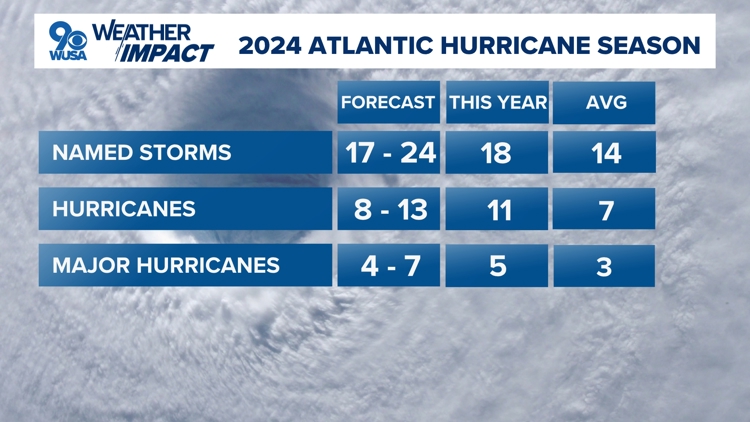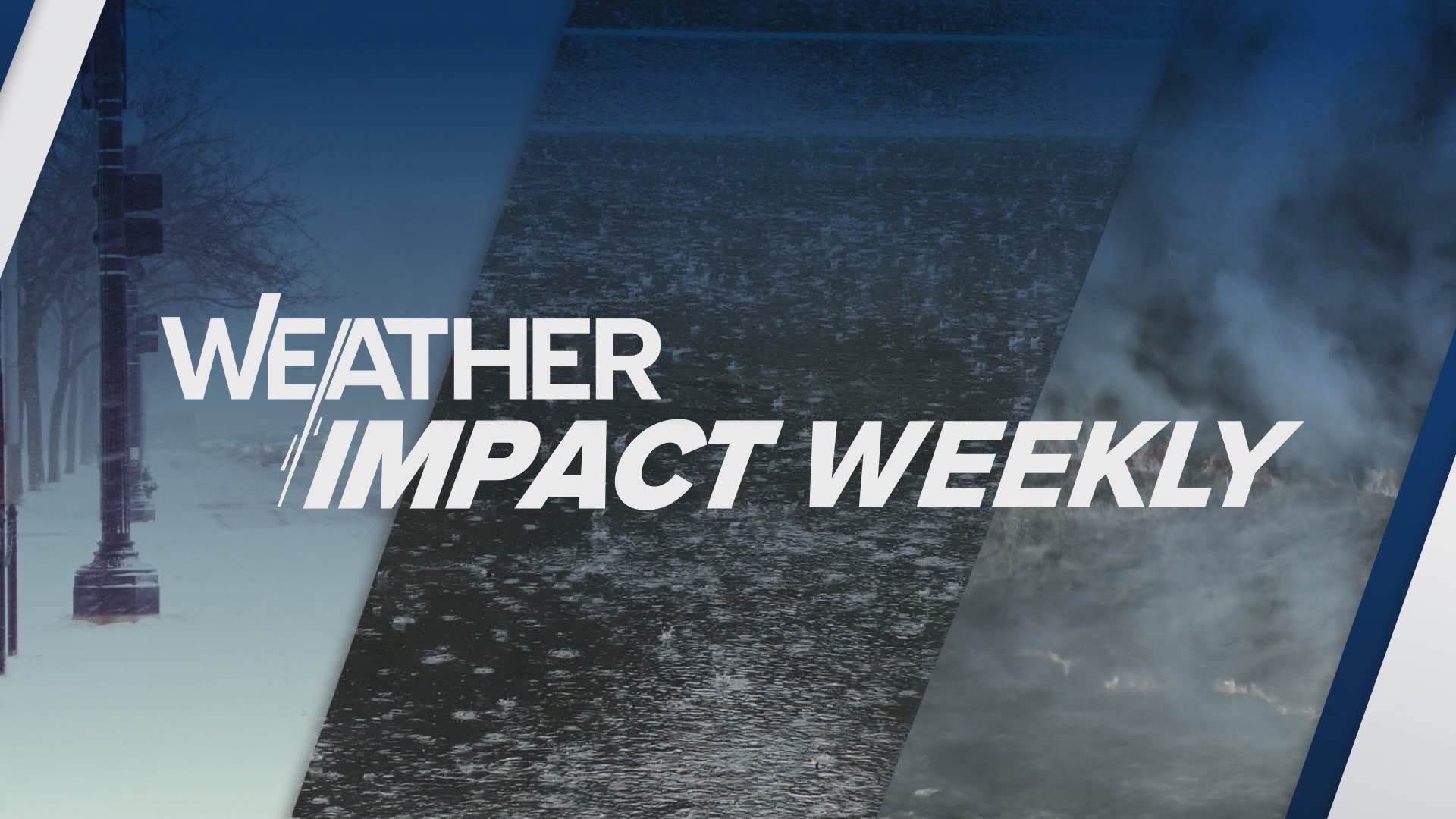WASHINGTON — The Atlantic hurricane season officially ends on Nov. 30, and 2024 was one for the record books. Despite a prolonged lull during the timeframe when we typically see peak activity, the season ended on an active note. The National Hurricane Center's (NHC) forecast did end within the range of predicted number of storms.
How many storms?
Named Storms (winds of 39 mph or higher)
- This year: 18
- NHC Forecast: 17 - 24
- Average: 14
Hurricanes (winds of 74 mph or higher)
- This year: 11
- NHC Forecast: 8 - 13
- Average: 7
Major Hurricanes (winds of 111 mph or higher)
- This year: 5
- NHC Forecast: 4 - 7
- Average: 3
Record Breakers
Hurricane Beryl
Hurricane Beryl was the earliest Category 5 hurricane on record in the Atlantic basin. It caused significant storm surge flooding across parts of Texas and Louisiana after making landfall southwest of Houston, Texas as a Category 1 storm.
Hurricane Helene
Parts of the country will be cleaning up from Hurricane Helene for years to come. The storm made landfall as a Category 4 storm on the Florida Gulf Coast on September 26th. The storm caused catastrophic flooding across the southern Appalachian mountains, widespread wind damage from the Gulf Coast to the North Carolina mountains and storm surge flooding along portions of western Florida. Early estimates indicate that Helene was the deadliest hurricane to affect the continental U.S. since Katrina in 2005. So far more than 150 direct fatalities have been reported. The majority of which occurred in North Carolina and South Carolina. Hurricane Helene marked the first time ever that that the National Hurricane Center forecasted a system would become a major hurricane before it even became a tropical depression or tropical storm.
Hurricane Milton
We also saw devastating Hurricane Milton. That storm made landfall as a Category 3 near Siesta Key, Florida, on Oct. 9 and resulted in a tornado outbreak that produced 46 tornadoes and caused torrential rainfall with total rainfall amounts of 10-15 inches (and higher). Milton also produced a destructive storm surge between Siesta Key and Ft. Myers Beach. Milton's rapid intensification was among the highest ever observed, with a 90-mile-per-hour increase in wind speed during a 24-hour period from early Oct. 6 to early Oct. 7. The National Hurricane Center's initial forecast for Hurricane Milton indicated the potential of a major hurricane landfall along the coast of west-central Florida almost two days before the storm formed into a hurricane, and more four days prior to landfall.
What now?
Even though the Atlantic hurricane season officially ends on November 30, that doesn't mean tropical storms just disappear. Tropical storms and hurricanes can develop at any time throughout the year. They're just more likely to form in the summer and fall months when sea surface temperatures are warmest and conditions are more favorable for tropical development.



